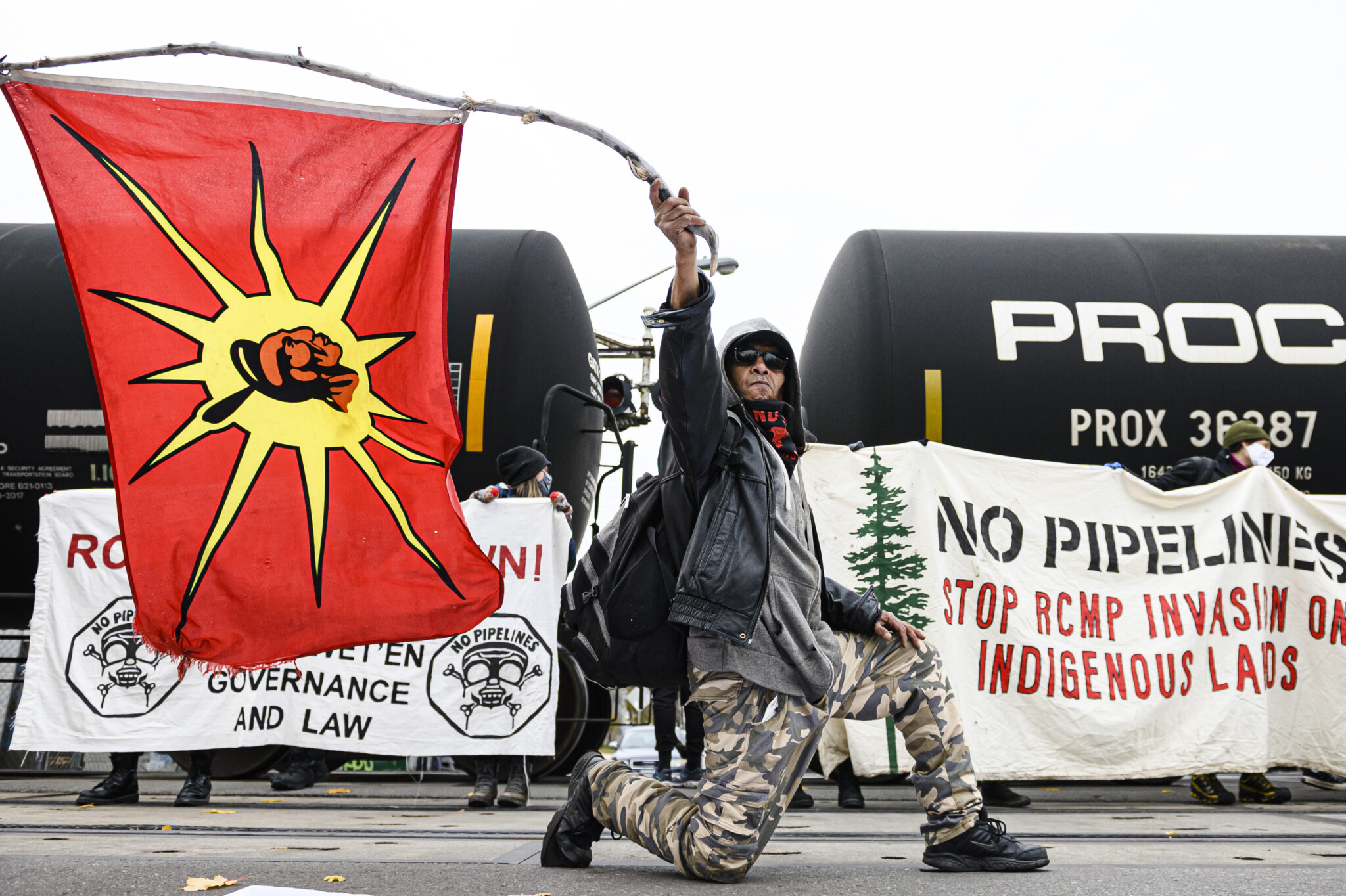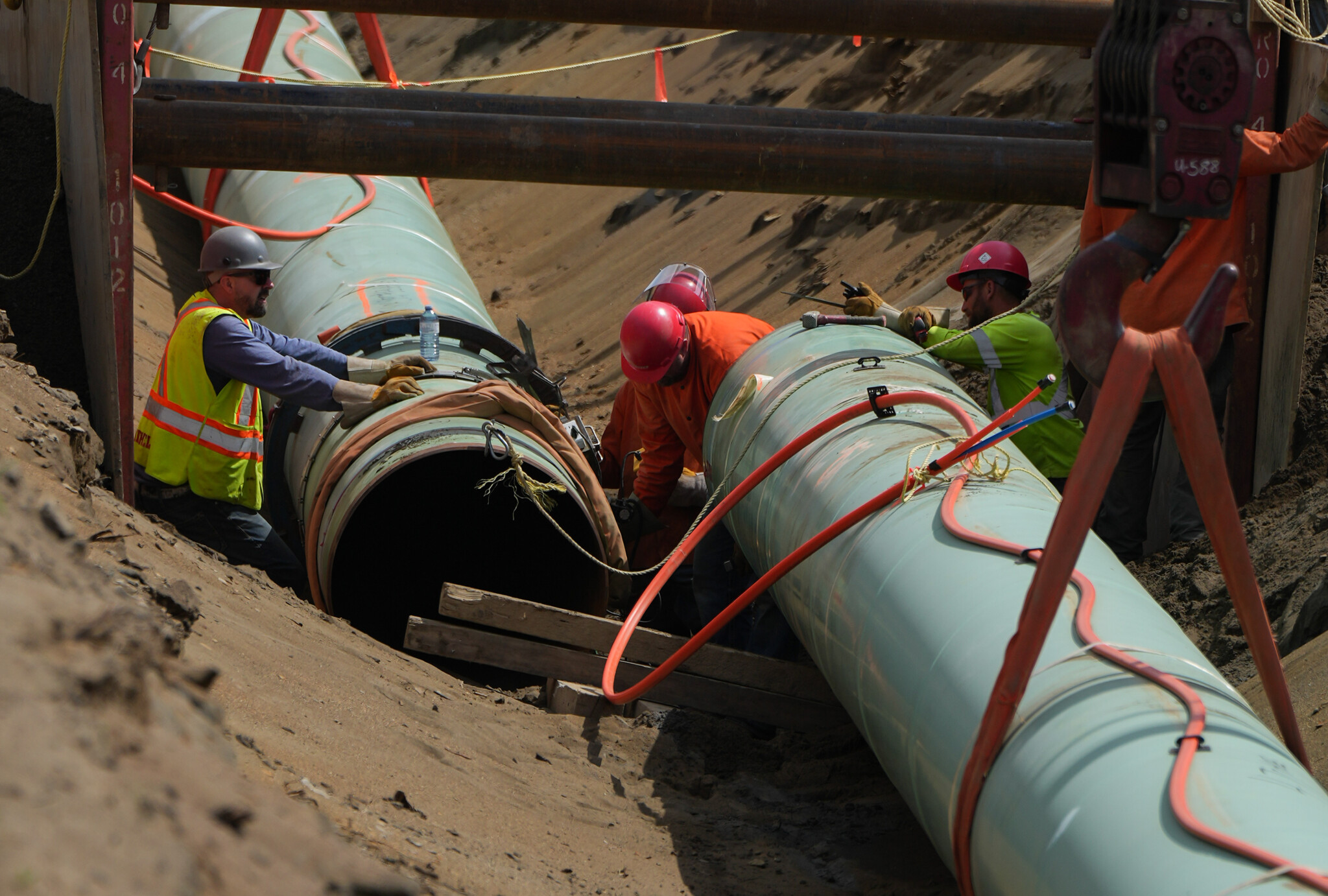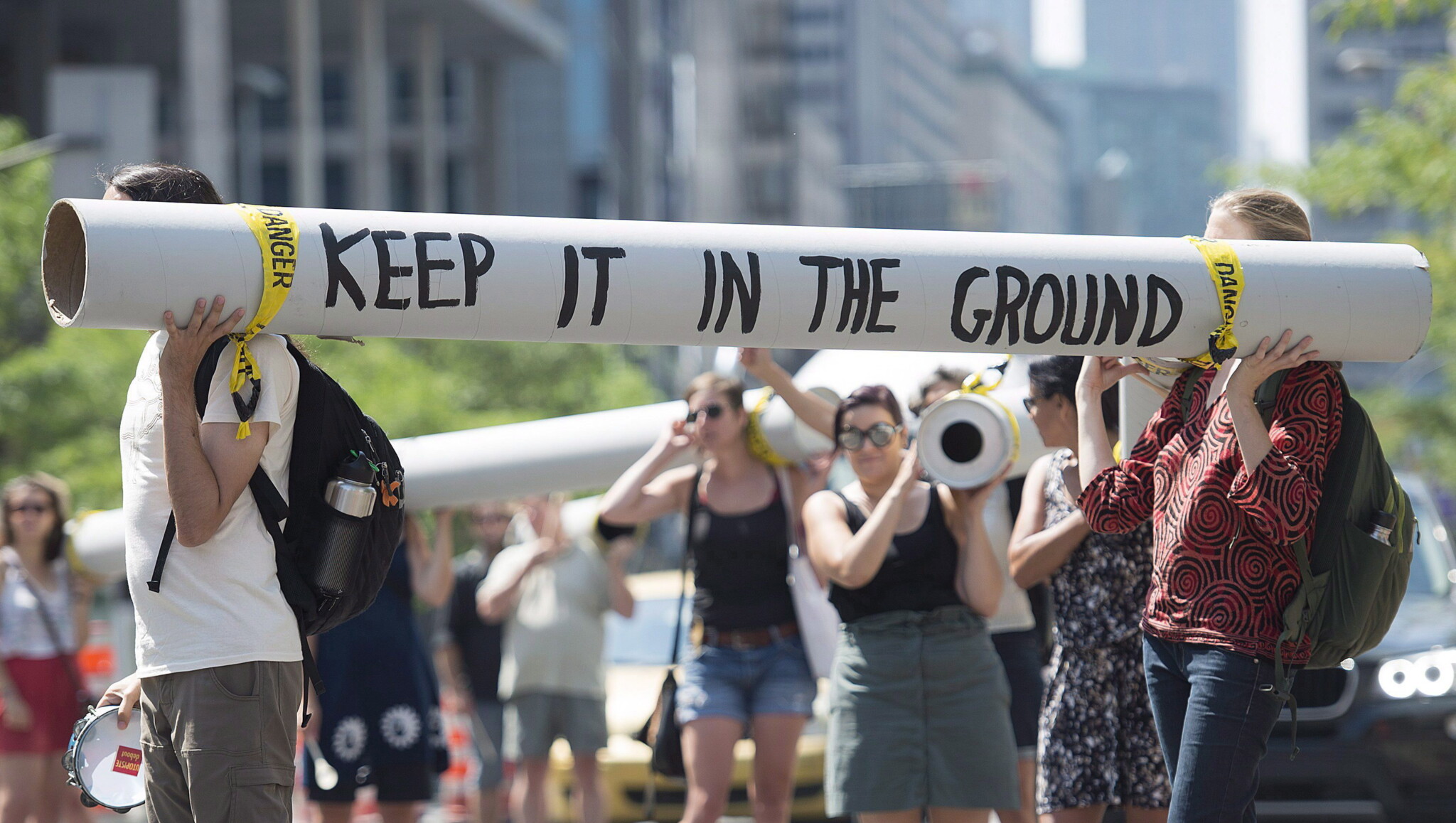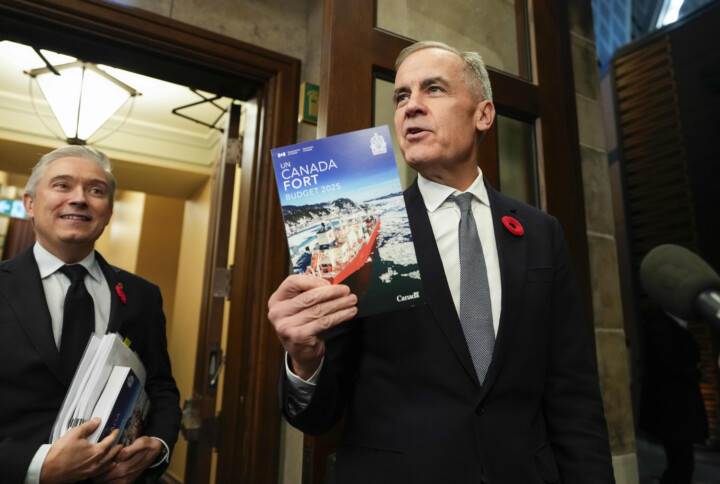No pipeline is coming. Not under Prime Minister Mark Carney. Not under any federal leader. But the promise of a pipeline—the vague, lingering maybe—is too useful to kill. That promise allows Ottawa to discipline the West, delay their demands, and extract cooperation without ever offering reciprocity. A built pipeline delivers oil. An unbuilt pipeline delivers obedience.
Western provinces that believe a Carney government might succeed where Trudeau failed misunderstand the nature of the offer. Carney won’t say yes—but, more importantly, he won’t say no. He will keep the dream just alive enough to remain useful: a chip, a valve, a leash.
The West is mistaking a symbol for a strategy
In Alberta and Saskatchewan, the pipeline is no longer infrastructure. It is identity—a test of whether a region that fuels the nation can ever be a full member of its own federation.
“We ship Ontario’s cars across borders,” they ask. “Why not Alberta’s oil?”
But that’s the trap. A bridge that can never reach the far bank isn’t a bridge—it’s bait. A lure. A leash. And every time the West lunges for it, the leash tightens.
Even the willing would fail
Even if we had a prime minister determined to “ram it through”—and in Carney we do not—he would fail. The obstacle is not political will. It is the nature of the Canadian system itself.
A new pipeline—especially one to the northern B.C. coast—is not merely unlikely. It is structurally unbuildable, not by law alone, but by the convergence of four overlapping vetoes: economic, legal, Indigenous, and provincial. Any one of these might be survivable. Together, they are fatal.
1. The market has moved on
There is no serious proponent. Energy East is defunct. Northern Gateway is dead. No credible backer has stepped forward, and none will. Eastern refineries are configured for light crude; retrofitting would cost more than $20 billion, with no commercial case to justify it. Capital markets have priced in risk: regulatory, reputational, and litigation. Long-horizon fossil fuel infrastructure in Canada now carries the scent of stranded assets.
2. The legal terrain is hostile
In Reference re Impact Assessment Act (2023), the Supreme Court reaffirmed that provinces can block federal projects that affect their jurisdiction. In Quebec v. NEB (2019), the courts upheld Quebec’s right to impose its own environmental review. The message is clear: federal jurisdiction is not supreme. It is conditional.

Protesters blocked a rail line in support of Wet’suwet’en land defenders who were arrested by the RCMP on Friday in northern British Columbia, in Toronto, Ont., on Sunday, Nov., 21, 2021. Christopher Katsarov/The Canadian Press.
3. Indigenous consent is now a gate, not a gesture
From Haida Nation v. British Columbia (2004) to Clyde River v. Petroleum Geo‑Services Inc. (2017), the Crown’s duty to consult has become substantive, judicially enforceable, and—in practice—determinative. Lawyers will say the duty is not a veto. But where consultation is absent or consent withheld, courts stop the project cold. Tsilhqot’in v. British Columbia (2014) went further: where title is established—or credibly claimed—the Crown must obtain consent or meet a near-impossible justification standard. Much of northern B.C. is unceded. Any route would cross contested territory. The legal label may be “consultation.” The operational reality is veto.
4. The politics are against it
Bill C-48 bans West Coast tanker traffic. Environmental opposition is entrenched. The federal public service is aligned with net-zero goals. And Ottawa, regardless of party, has no political capital to burn on a project that will take a decade, face lawsuits at every stage, and spark protests. Recent federal legislation—like Bill C-5 and the proposed Building Canada Act, which both the Liberal Party and Conservative Party support—doesn’t assert federal supremacy. It evades the question. There is no federal mechanism to impose a pipeline over Indigenous or provincial opposition. The only options are persuasion—or paralysis.
None of this means pipelines are unconstitutional in theory. But constitutionality is not the bar that matters.
What matters is the cumulative effect: so many veto points, so much uncertainty, and such sustained resistance that no rational actor will proceed. The result is the same as prohibition, without ever declaring it. The system has not outlawed new pipelines. It has simply made them impossible.

The Trans Mountain expansion pipeline under construction. Darryl Dyck/The Canadian Press.
The consequence is structural, not political. And Liberal Ottawa, increasingly, sees the value in letting the illusion persist. The project stays alive—on paper, in consultations, in corridor studies—just enough to extract discipline, deference, and delay. It is not a dead promise. It is a living instrument. The pipeline survives not to be built, but to bind.
The pipelines survive because they still extract obedience
The pipeline may be dead as a project, but it will live on as a mechanism of control. Carney is learning how to wield its ghost. Whether this is a deliberate strategy or inertia is beside the point. Ambiguity doesn’t need intent to function—it disciplines through delay, extracts through hope, and governs through silence.
Whenever Western provinces grow restless, the pipeline will reappear:
“We’re studying it.” “We’re consulting.” “We’re exploring options.”
But nothing will be built.
Meanwhile, the mere possibility of federal support will be used to extract compliance:
- Push too hard on equalization reform? Risk the pipeline slipping out of reach.
- Oppose a new federal climate framework? Don’t expect cabinet help.
- Flirt with separation? Say goodbye to corridor studies.
The threat will never be spoken aloud. It doesn’t need to be. Everyone will understand the dance.
Other provinces exploit the illusion and profit
Western provinces are not the only players in the pipeline game. Other provinces—each with distinct interests—are in the process of discovering that symbolic support for the West’s unbuildable project is its own currency, often enough to extract real concessions from Ottawa as well as the West. So long as the pipeline remains theoretical, its spectre becomes a federation-wide bargaining chip.
Ontario can play the strategic moderate. During negotiations over federal battery subsidies or EV manufacturing incentives, Ontario can gesture toward pipeline feasibility. That posture of national balance will help secure additional billions in federal industrial support, while Alberta and Saskatchewan are expected to stay quiet and, crucially, help fund it.
Quebec can take a more defiant line. Open opposition to pipelines plays well at home—serving both environmental and nationalist ends. But when Ottawa needs a show of pan-Canadian unity—during corridor consultations, for instance—Quebec can offer to temper its tone. In return, it might receive expanded provincial discretion, generous transfers, and de facto, veto rights—financed in part by federal programs Alberta and Saskatchewan disproportionately underwrite.
British Columbia will tread carefully. It opposes oil tankers and fossil fuel expansion but is always willing to participate in dialogue or join a working group. That symbolic cooperation will be enough to unlock federal support for its priorities. The project won’t proceed—but B.C. walks away with infrastructure, while the Prairies pick up part of the tab.
Even the Atlantic provinces can find a role. By voicing tentative openness to eastern routing or terminal concepts, they position themselves as helpful federation-builders. That posture—purely rhetorical—can be traded for higher transfers, transition funds, and regional development grants. Again, Alberta and Saskatchewan foot the bill.
In every case, provinces trade in symbolic gestures while pursuing their real priorities. And the provinces actually demanding a pipeline? They end up paying for everyone else’s deal—in exchange for symbolic expressions of support for a phantom pipeline project that the underlying architecture of Canada does not permit to be built.

Alberta Premier Danielle Smith speaks during a press conference in Edmonton, Tuesday, May 6, 2025. Jason Franson/The Canadian Press.
Hope has become a tool of discipline
The pipeline is no longer a promise. It is a punishment the West keeps volunteering to endure. This is not to absolve Western leaders. They have chosen, again and again, to anchor their leverage to a federal “yes” that will never come. In doing so, they have surrendered initiative—and funded a federation that exploits their restraint. By investing pipelines with existential meaning, Western leaders have handed Ottawa a powerful tool of coercion.
Every time Alberta or Saskatchewan ties its dignity to pipeline approval, it increases Ottawa’s leverage. The more desperate the West becomes for a “yes,” the more valuable Ottawa’s silence becomes.
This is not simply neglect. It is extortion by hope. And it works—not through action, but through ambiguity. Ottawa offers nothing but hope. In return, it gets discipline, deference, and fiscal cooperation.
What, then, remains for those provinces locked out of consensus but still asked to underwrite it? In asymmetric systems, the most effective leverage may come not from leadership—but from refusal.
Spoiler by design?
In complex systems, authority is less about imposing outcomes than navigating interlocking vetoes. In such terrain, spoilers emerge not as exceptions—but as consequences. Alberta and Saskatchewan, excluded from the dominant consensus yet indispensable to national revenue, may be drifting into such a role—not as ideologues or radicals, but as rational actors operating in an institutional environment that rewards obstruction over alignment.
Seen in this light, national unity may be epiphenomenal: not a cause of stability, but a surface effect sustained only as long as the West consents to its own marginalization. Behind the performance of harmony lies a structural asymmetry of interest, power, and return.
This is not a call for chaos. But it is a warning against passivity. So long as the pipeline remains a phantom—useful to Ottawa, undeliverable in law—Western leaders must ask whether participation is still strategic, or merely habitual.
The West must cut the gilded shackle
The pipeline dream is dead. It just hasn’t stopped breathing yet.
The West must begin by recognizing the terrain:
- A confederation in which power flows East.
- A constitutional order that fragments authority rather than concentrates it.
- A jurisprudence that treats Indigenous consultation not as a procedural hurdle, but as a distinct expression of sovereignty.
- And a federal culture that trades in symbolism because real concessions are costlier and harder to deliver.
The pipeline will not be built. Its economics are marginal, its politics radioactive, and its constitutionality uncertain. But its utility—as an instrument of delay, discipline, and quiet extraction—is unmatched.
It no longer matters whether Ottawa will ever say yes. What matters is that the West keeps hoping—and that hope is what keeps it compliant.
The pipeline is not a promise. It is a shackle: gilded to resemble progress, forged to restrain. The longer the West mistakes that shine for strategy, the longer it remains captive to its own expectations.
A pipeline that will never be built should not define the West’s place in Canada—nor dictate how it negotiates, votes, or invests.
This is not surrender. It is strategy. The point is not to give up, but to move on. Strategy begins when illusion ends. If the dream has become the trap, then killing it—openly, deliberately, and without illusion—is the first step toward freedom.
Only then can the West stop chasing the carrot—and start setting the direction.










